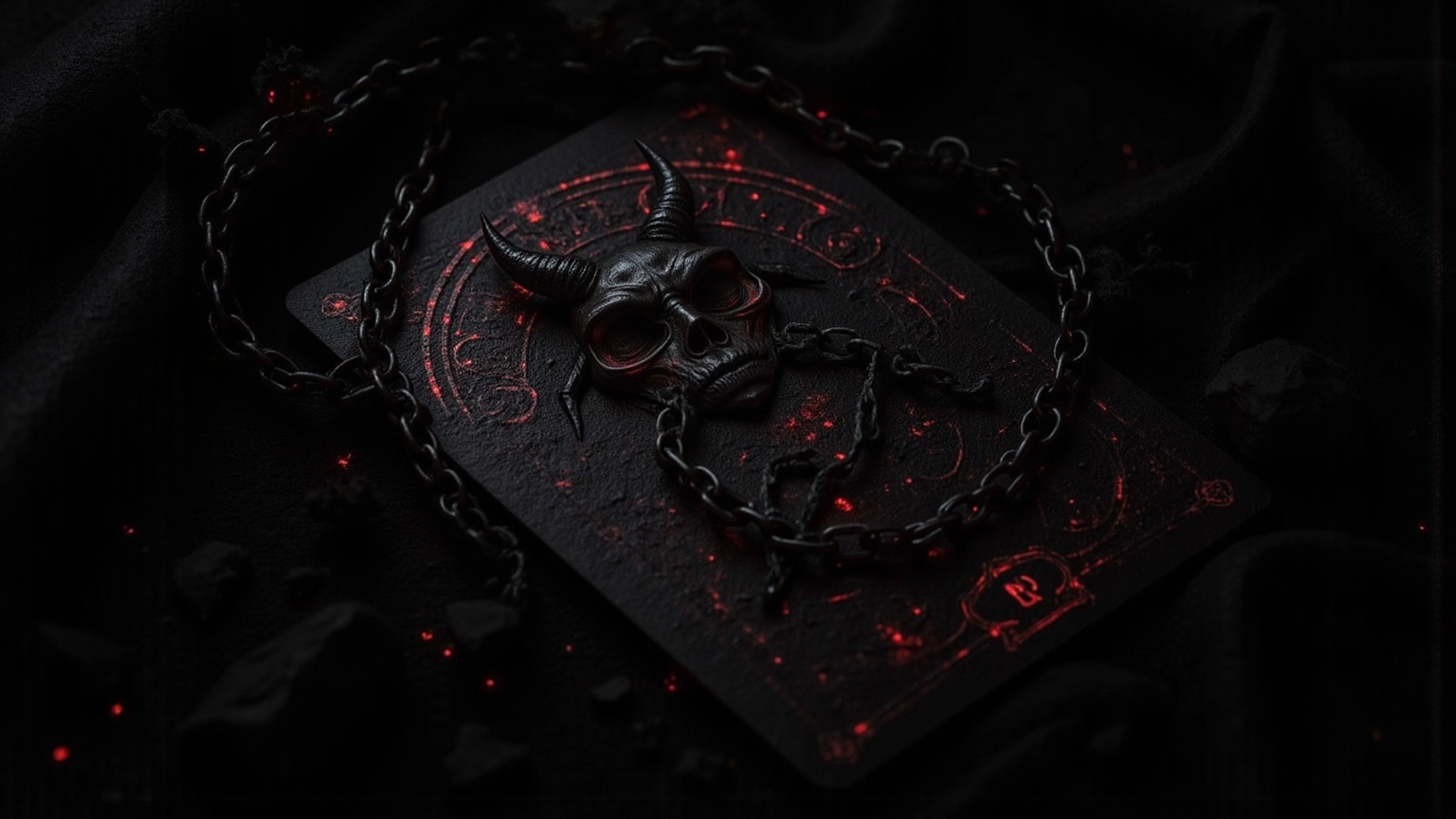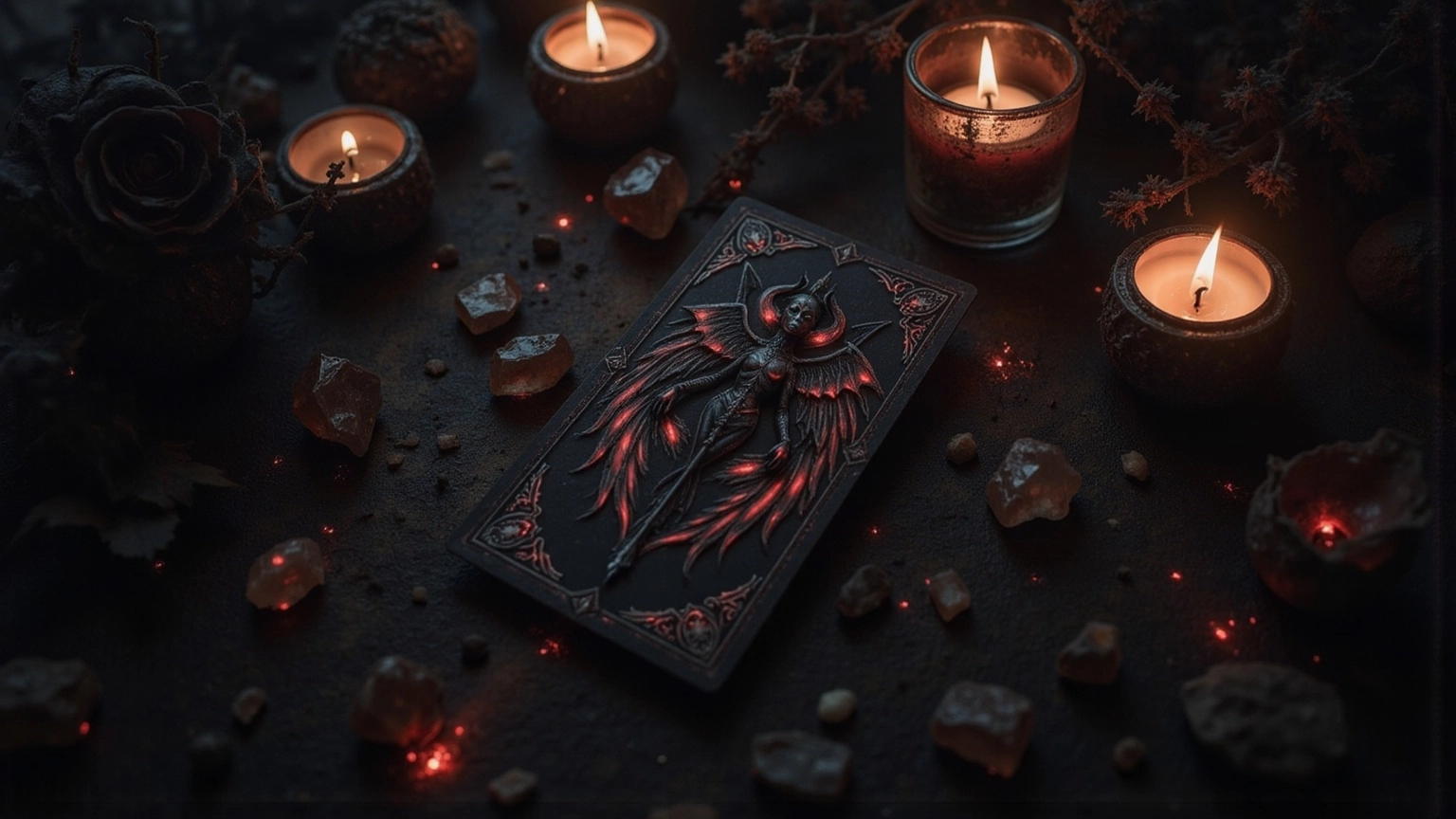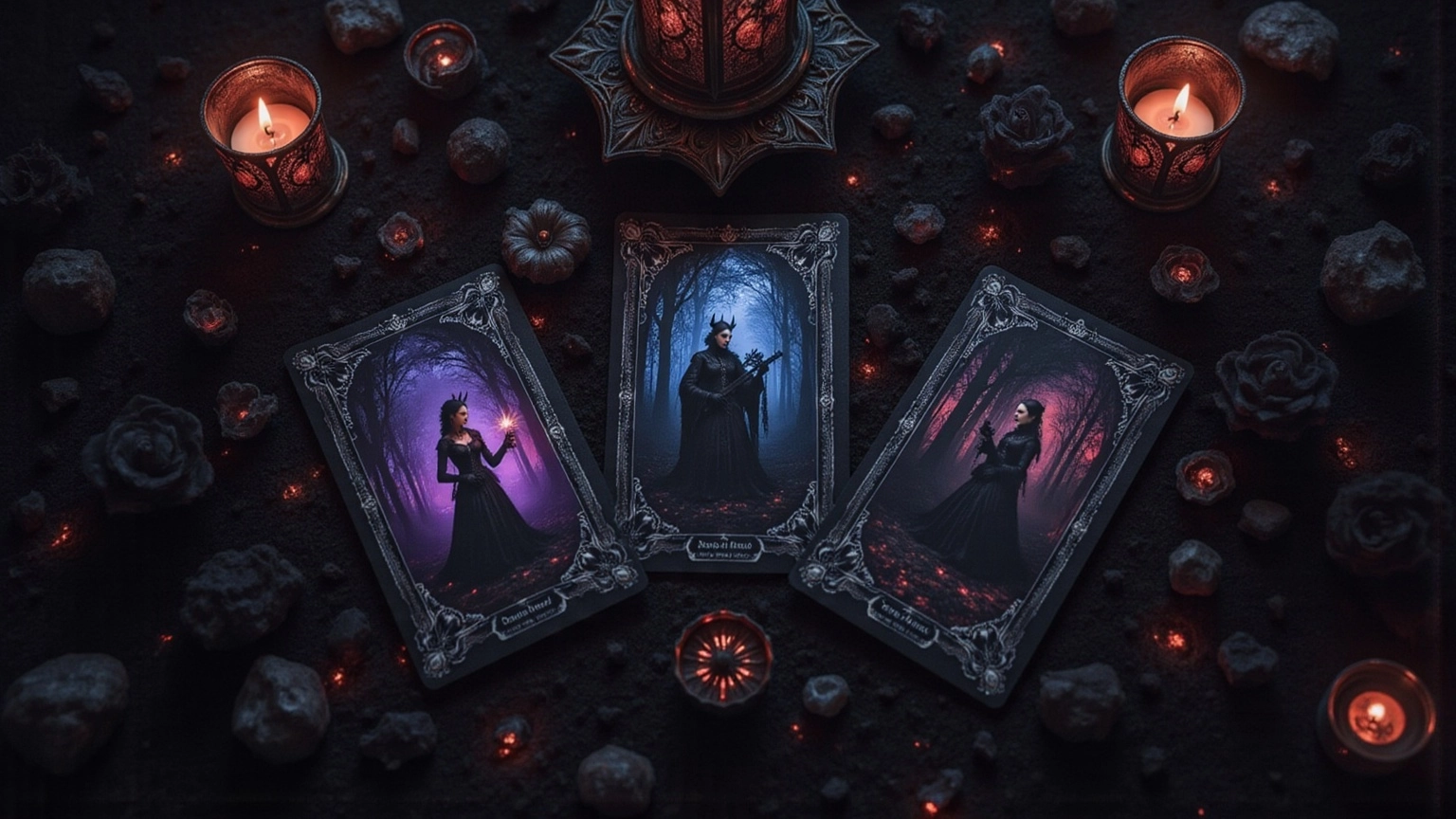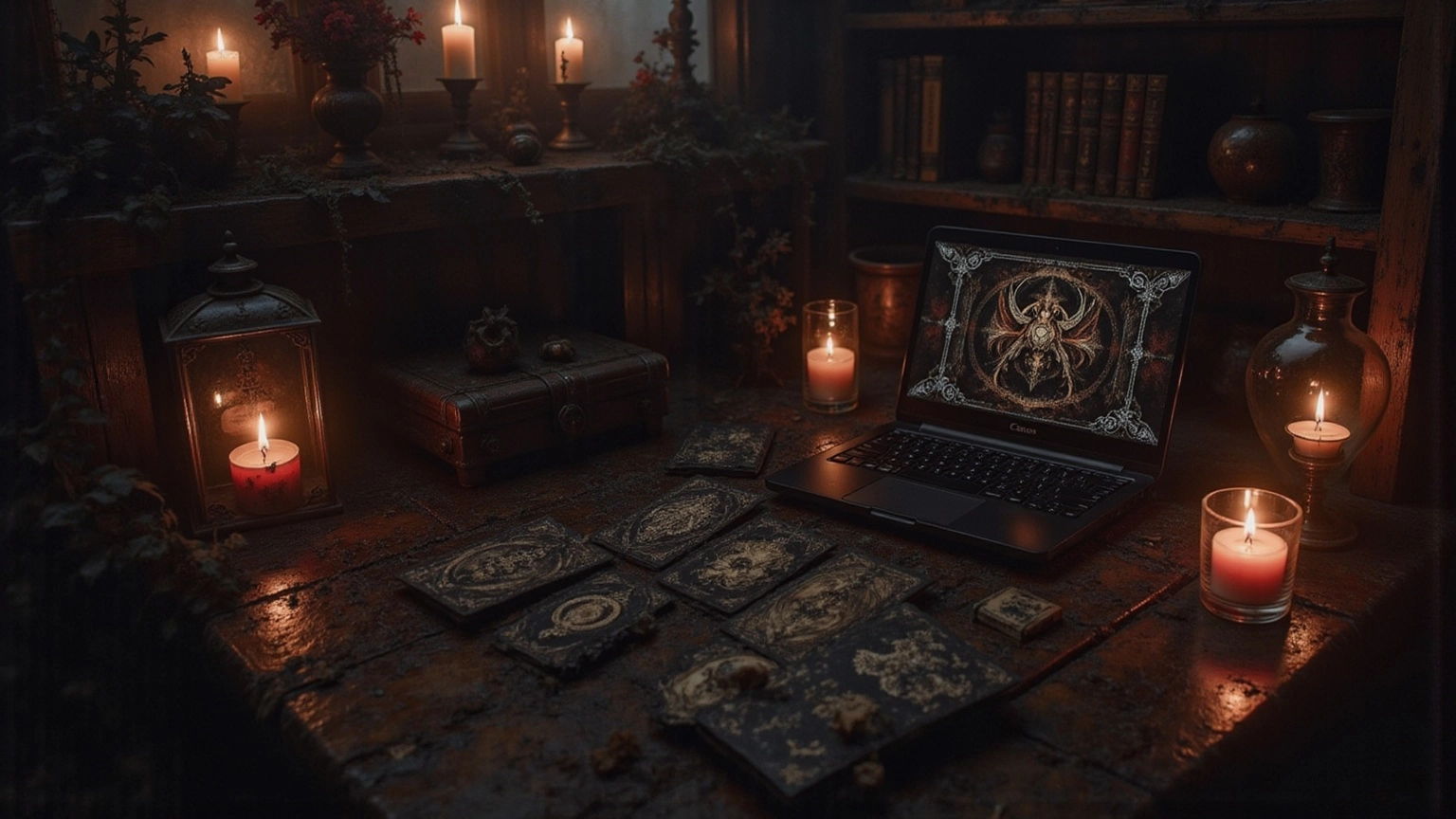
Master the Devil Card Reversed for Insightful Tarot Readings
Share
Overview
Mastering the reversed Devil card in tarot readings isn’t just a journey; it’s a rebellion against toxic patterns. This card, when flipped, screams liberation and personal growth. It’s a transformative moment—an invitation to confront your inner demons. Are you ready to face the shadows lurking within?
In addiction recovery, the reversed Devil stands as a beacon of hope, illuminating the path to change. It dares you to reflect, to empower yourself in the darkest of times. This isn’t just tarot; it’s a call to action, a challenge to rise above and reclaim your narrative.
So, what’s holding you back? Embrace the chaos, dive deep into self-reflection, and let the reversed Devil guide you toward your metamorphosis. Your journey awaits, shrouded in the intoxicating allure of transformation.
Introduction
The Devil card in tarot—its haunting imagery of chains and shadows—beckons you to confront the darker corners of human nature. Temptation, materialism, the struggles that ensnare the psyche. It’s a mirror reflecting the chaos within.
But what if you flipped it? Understanding the reversed meanings of this card unveils a profound opportunity for personal growth, a chance to break free from self-imposed chains and destructive habits.
So, how do you wield this symbolism to ignite insight and transformation during your tarot readings? Delving into the depths of the Devil card reversed not only illuminates your journey of self-discovery but also dares you to face your inner demons.
Embrace the potential for renewal—are you ready to rise from the ashes?
Understand the Symbolism of the Devil Card
The Devil symbol—think chains, shadows, temptation—embodies our shadow self, materialism, and those primal urges that can ensnare us. In tarot, it’s the mirror reflecting the aspects of life that trap us in addiction or feelings of confinement. Grasping these symbols is essential for deciphering the deck's true messages. Chains? They scream confinement, a stark reminder of how we cling to toxic patterns or dependencies. Janet Boyer highlights that the devil card reversed often signifies enslavement to the material world and destructive habits.
The image of the antagonist, similar to the devil card reversed, reveals our inner demons, those darker facets of our nature that echo our obsessions and attachments. Recognizing these elements will sharpen your interpretive skills, allowing for a richer understanding of the psychological depths at play. Dive deeper, explore the shadows, and unravel the intricate dance between desire and entrapment in your readings.

Explore the Reversed Meanings of the Devil Card
When the devil card reversed flips upside down, it symbolizes freedom from toxic chains, a daring escape from self-imposed prisons, and the clarity that comes with confronting your demons. This reversal isn’t just a twist; it’s a personal renaissance, a moment where you face your fears and addictions head-on. Picture this: drawing the devil card reversed in a reading might just signal your triumph over a toxic relationship or a nasty habit. It’s a call to embrace your newfound liberation and reflect on the gritty lessons learned from past battles.
Tarot practitioners don’t shy away from the raw power of this symbol on the path to self-discovery. They see the adversary as a catalyst, pushing you to recognize your strength to transform and break free from the shackles of addiction or destructive patterns. Acknowledging these forces isn’t just a step; it’s the leap into healing and metamorphosis.
Let’s not downplay the importance of freedom in this inverted tarot symbol. It’s a bold invitation to introspection, daring you to release what no longer serves you. This act of letting go is vital for growth, paving the way for healthier relationships and habits to flourish.
In the realm of addiction recovery, the symbolism of the devil card reversed resonates deeply. It shines a light on the potential for rebirth and the strength found in vulnerability. As Russell Brand puts it, "You need only allow gentle hope to enter your heart. Exhale and allow hope, and give yourself some time." Many have shared tales of transformation through divination sessions featuring this inverted figure, illustrating how it can guide them toward wiser choices and a richer life. And let’s face it: about 50% of those grappling with substance use disorders also battle co-occurring mental health issues, showcasing the intricate web of recovery.
Ultimately, the devil card reversed serves as a beacon of hope, lighting the way to liberation and self-empowerment. Tackling the stigma of addiction and emphasizing the need for ongoing support and aftercare can elevate the journey of personal growth, morphing it into a continuous saga rather than a fleeting moment.

Apply Reversed Meanings in Your Tarot Readings
Ready to dive into the dark allure of reversed interpretations? Contextualize the querent's inquiry, and let the themes of liberation and self-awareness seep into their life experiences. Picture this: a querent grappling with addiction. The upside-down card? A beacon of hope, signaling their readiness to embrace change and seek help. Remind them to honor their journey and the strides they've made.
Now, let’s talk layouts that scream personal growth. The 'Past, Present, Future' spread is your secret weapon, illuminating how the Devil's themes dance through life’s phases. This isn’t just a reading; it’s a deep dive into self-reflection, empowering querents to unearth their potential for change and break free from self-imposed chains.
But wait—there’s more. Insights from divination specialists can elevate your readings to another realm. A seasoned fortune teller might reveal that the devil card reversed often heralds liberation from toxic ties, echoing the self-exploration journey many embark upon. And here’s a kicker: 51% of Gen Z is dabbling in divination or fortune telling. This surge hints at a cultural shift, where personal growth and transformation through alternative spiritual practices reign supreme.
Consider case studies like 'The Role of Tarot in Personal Growth.' They showcase how individuals harness these practices to tackle personal demons, spotlighting the devil card reversed in its role of fostering self-awareness and freedom. Weave these threads into your readings, and you craft an experience that resonates deeply with the wellness and gothic elegance that Darc Arts embodies. Are you ready to explore the shadows and light within?

Utilize Resources for Deeper Insights and Practice
Ready to dive into the dark allure of the Devil tarot? Unleash your curiosity with a treasure trove of resources. Websites like Biddy Tarot and Labyrinthos are your gateways, brimming with rich guides on meanings and interpretations. They’re your launchpad, whether you’re just starting or you’ve danced with the cards before. Want to dig deeper? Grab a copy of 'The Ultimate Guide to Tarot Meanings.' It’s not just about the cards; it’s about the symbols, including the haunting interpretations of the devil card reversed.
But don’t stop there. Join online divination communities or forums—these are the hidden chambers where insights flow and connections spark. The Tarot Journal, an anonymous tally of decks, reveals usage trends and builds a vibrant community. Feel the pulse of the tarot world!
And let’s not forget the magic of practice. Read for yourself or friends, focusing on the enigmatic the devil card reversed. Each reading sharpens your skills and builds your confidence. Did you know that, as Tom Read notes, most people seek psychic services 1 to 5 times a month? It’s a testament to the growing intrigue surrounding card reading as a path to spiritual guidance.
With the psychic industry surging 52% since 2005, the time is ripe to immerse yourself in the captivating realm of tarot. Are you ready to unlock its secrets?

Conclusion
The Devil card reversed in tarot isn't just a card; it's a profound journey toward liberation and self-discovery. When flipped, this card sheds its chains of temptation and confinement, symbolizing a powerful release from toxic patterns and a daring confrontation with your inner demons. Embrace its reversed meaning, and watch as it illuminates pathways to personal growth, urging you to shatter destructive habits and cultivate healthier relationships.
Key insights throughout this exploration underscore the symbolism behind the Devil card, its implications for addiction recovery, and the art of applying its meanings in tarot readings. The reversed card stands as a beacon of hope, guiding querents toward the depths of introspection and self-awareness. By wielding various tarot layouts and resources, practitioners can deepen their understanding and enhance their readings—ultimately empowering others on their transformative journeys.
As tarot's allure continues to rise, the teachings of the Devil card reversed become a catalyst for change. This card mirrors the struggles we face while revealing the strength found in vulnerability and the promise of rebirth. Engage with these insights, confront your shadows, seek support, and embark on a healing path. Now is the time to dive into the depths of tarot, harnessing its wisdom to illuminate the way toward a richer, more fulfilling life.
Frequently Asked Questions
What does the Devil card symbolize in tarot?
The Devil card symbolizes our shadow self, materialism, and primal urges that can ensnare us, reflecting aspects of life that trap us in addiction or feelings of confinement.
What do the chains in the Devil card represent?
The chains represent confinement and serve as a reminder of how we cling to toxic patterns or dependencies.
What does the Devil card reversed signify?
The Devil card reversed often signifies enslavement to the material world and destructive habits.
How can understanding the symbolism of the Devil card improve tarot readings?
Recognizing the elements represented by the Devil card can sharpen interpretive skills and provide a richer understanding of the psychological depths at play in tarot readings.
What should one do to deepen their understanding of the Devil card?
One should dive deeper into the symbolism, explore the shadows, and unravel the intricate relationship between desire and entrapment during their readings.
